 Just as my first two shows on Saturday at the Hollywood Fringe Festival (FB) showed the range of the Fringe Festival; my second two Saturday shows showed the power of the Fringe Festival to showcase new work that is an essential commentary of our times. Fringe is interesting in that way. At the 2017 festival, the emotion from Trump’s election was exposed and raw, and there were numerous shows about the President that were equally raw, and came from a place of fear, which far too unfortunately has proven to be well justified. This year, the predominant theme came from the #MeToo movement, and there were numerous shows on that subject. I didn’t go to see many in that vein, but today’s shows touched on other raw issues: the issue of race and the legacy of hate in the South, and the dangerous power of demagogues and charlatans who give the people what they want, even if it isn’t in their interest. But first, however, the obligatory description of the Fringe, and an upfront PS:
Just as my first two shows on Saturday at the Hollywood Fringe Festival (FB) showed the range of the Fringe Festival; my second two Saturday shows showed the power of the Fringe Festival to showcase new work that is an essential commentary of our times. Fringe is interesting in that way. At the 2017 festival, the emotion from Trump’s election was exposed and raw, and there were numerous shows about the President that were equally raw, and came from a place of fear, which far too unfortunately has proven to be well justified. This year, the predominant theme came from the #MeToo movement, and there were numerous shows on that subject. I didn’t go to see many in that vein, but today’s shows touched on other raw issues: the issue of race and the legacy of hate in the South, and the dangerous power of demagogues and charlatans who give the people what they want, even if it isn’t in their interest. But first, however, the obligatory description of the Fringe, and an upfront PS:
* For those unfamiliar with Hollywood Fringe Festival (FB), there are over 390 different shows occurring in the heart of Hollywood, with most along the stretch of Santa Monica Blvd from Western to W of LaBrea, and between Hollywood Blvd and Melrose. The shows run from 5 minutes to 2 hours, from one person shows to gigantic casts, from mimes to musicals. They have one — and only one — thing in common: they have to be able to load into a theatre in 15 minutes or less, and get out afterwards in the same time. You never know what you will see: it could be complete crap, it could be the start of a major new show. The shows and scheduling thereof are a nightmare to coordinate, but you could easily end up seeing four to five shows in a day. However, you can be guaranteed of a good time.
P.S.: For those that didn’t see this post, I — a stalwart audience member, who have never been on the other side — has been inspired by Fringe, and am thinking about how theatre could explore cybersecurity. If you’re interested in helping, contact me. If not, at least read The High Assurance Brake Job linked in that post.
Now, on to the remaining Saturday shows:
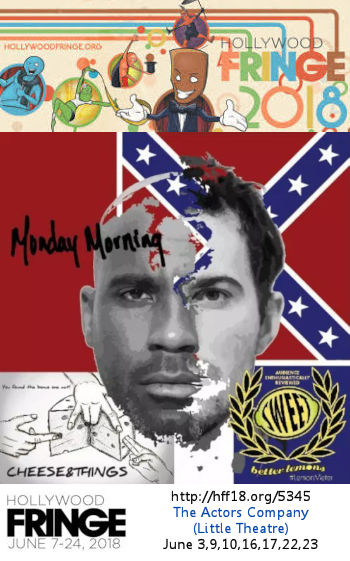 Monday Morning / Cheese & Things was actually two shows in one: a ten-minute opening show (which was a comedy), and a fifty minute full-on drama.
Monday Morning / Cheese & Things was actually two shows in one: a ten-minute opening show (which was a comedy), and a fifty minute full-on drama.
Cheese & Things, the opening show written and directedy by L. P. Dohi (FB), was set at a baby shower with two friends waiting for the reveal of the baby’s sex. It starts with one woman, Sydney, talking about about how she masturbates, and has no use for men. This shocks the other woman, Frances, and the discussion continues on in a sexual vein. There are discussions about how women only reach orgasm during sex about half the time; about how women faking it ruins men who then think they know how to bring women off. One woman reveals she’s afraid to go out with men because 9 out of 10 women killed were killed by a man. This leads to one of the best retorts of the show: “That you know of.” There are also discussions about women’s periods, the use of tampons vs. diva cups, and so forth.
I’m not sure that this opener delves into any particular deep areas, although I’m sure for the ladies in the audience it was quite cathartic, and expressed some of what they felt. As a guy in the audience, however, I’m unsure how I was supposed to react (especially as one whom I’m discovering is less than typical, for I listen to and respect my wife, and follow the adage of when she’s happy, I’m happy). In many ways, my reaction as a man was similar to my reaction to They’ll Be Some Changes Made, in that it tended to present a one-sided, somewhat stereotypical, view of men. But then again, I’m an outlier in that area, and media tends not to show the atypical.
Setting that aside, I still found the play quite funny and enjoyable.
The two women, Bessie Jo Hill (FB) as Sydney and Natalie Davis (FB) as Frances had good comic timing and a great chemistry together. They were very believable as their characters. The author of their sibling from another mother play, Nathan Trumbull (FB), played the partner of the target of the baby shower, and popped in his head occasionally.
After the whine and cheese appetizer (should I duck and run?), we came to the meat of this Fringe show, the play Monday Morning by the aforementioned Nathan Trumbull (FB). This play was simply spectacular, and held my interest and focus throughout.
Monday Morning tells the story of two co-defensive coordinators for the Old Miss Rebels, Charles (who is black) and Mack (who is white). On the Monday morning after a game against Florida State, Charles walks in to discover that Mack is asleep on the office couch; he has a hangover, and indicates that his wife threw him out the night before because of something he had done. After some back and forth character establishing conversation that demonstrates the depth of friendship between these two, Charles turns on the news and we learn that the night before there had been a rally against tearing down a Civil War statue on campus that had turned violent. For some reason, Mack keeps turning off the radio. They eventually start plotting their avenue of attack for the game against LSU the next weekend. Mack has a number of players he thinks are key to winning the game, when Charles informs him that they may not be able to field those players. Mack can’t understand why, and then Charles brings up why he wanted to hear about the rally the previous night. It seems that a number of players had been at the rally the previous night, and a few of the black ones had been arrested and released, after one of white players — who wasn’t arrested — joined in with the white supremacist fraternity in singing a racist and hateful song, and waving a flag with the Dixie banner. Mack then goes to his locker and pulls out what appears to be the Confederate Battle Flag, but that he then reveals to be the Mississippi state flag. Charles notes that that flag is banned on campus, and its display could be viewed as a hate crime. This leads to a discussion on how the police treated the black players, should they be suspended for a game — all of which Mack supports. But then, when the discussion turns to the white player, things turn even uglier. Charles wants to pull his scholarship for his involvement in hate crimes — something against the student handbook. Mack protests, and in the discussion of that protest, the real reason Mack was hired in the first place is revealed, and Mack’s ugliest side reveals himself.
This is a topic in this news, and one vital to the day — especially as our leaders are working to divide this nation based on race and skin color, and as we see white supremacy raising its ugly ugly head (and I see many white conservative friends defending the police behavior of white officers against blacks, and defending the legacy of the Civil War). I think this play is a must see for the story it tells and the message it imparts. It exposes the undercurrent of hate far too visible today.
Under the direction of Wolfgang Bodison (FB), the performances were spectacular and riveting. As Charles, C. W. Smith (FB) provides the voice of reason, with a clearly visible seething under the surface that you can see him controlling. Mack, as played by Grayson Low (FB), is more clearly the good-ole-boy Southerner who is laid back about what happened — but who too has a violent side that — unlike Charles — does appear to surface, in a quite ugly way, at times.
The program provides no production credits for things like costume or the set/prop design. There is also no specific credit for producer, and the stage manager isn’t credited either.
I think this combination of appetizer and main dish is well worth seeing. Cheese & Things is quite funny, and Monday Morning is quite spectacular and topical. They represent — in a more traditional one-act play sense — the best of what Fringe could be.
This was supposedly the final performance of “Monday Morning” and “Cheese & Things”. But check their Fringe website, for I hope that someone sees clear to give them an extension.
 As you probably know, attending theatre and writing up shows isn’t my day job. I work full time in El Segundo, and commute daily from Northridge. When I drive the vanpool, I play podcasts. Sometime in February or March I played a recent episode of the wonderful Reply All podcast from Gimlet Media (FB) about a charlatan doctor in Kansas, Dr. John R. Brinkley. That podcast was about what happened when new technology (in this case, radio) fell into the wrong hands, and how people were convinced — thanks to the power of the media — to do things that were clearly not in their best interest, even though they were thoroughly and completely convinced that they were.
As you probably know, attending theatre and writing up shows isn’t my day job. I work full time in El Segundo, and commute daily from Northridge. When I drive the vanpool, I play podcasts. Sometime in February or March I played a recent episode of the wonderful Reply All podcast from Gimlet Media (FB) about a charlatan doctor in Kansas, Dr. John R. Brinkley. That podcast was about what happened when new technology (in this case, radio) fell into the wrong hands, and how people were convinced — thanks to the power of the media — to do things that were clearly not in their best interest, even though they were thoroughly and completely convinced that they were.
In The Dangerous Cures of Dr. B, , conceived and directed by Ben Landmesser (FB), and created by The Puckwit Gang (FB), the story of Dr. John R. Brinkley is presented as an allegory for a different demagogue, who is currently in vogue and — alas — in leadership, who has convinced a large number of people through the power of personality that he, too, is their savior. As a result, these people support him although clearly what he is doing is not in their self interest either.
To understand the allegory, you need to know who Brinkley was. One website captures it succinctly:
From 1917 through the 1930s, physician John Brinkley made millions of dollars by implanting goat testicles in men to restore their virility.
You are not misreading that. Goat testicles. Brinkley, who never finished medical school, was a “doctor” whose claim to fame was supposedly restoring virility by convincing men that they could have the sexual prowess of goats if they implanted goat testicles in their body. He later got a radio station, and his clinic shot to fame through well produced radio shows, broadcast across the country, where his snake oil was sold (even as the nascent AMA fought him). After he was exposed, he turned to politics. He ran for Governor of Kansas, but ultimately lost after voter tampering and fraud was uncovered.
The Puckwit Gang takes that story — which they also learned about from Reply All — uses it to drawn an unspoke analogy to Donald Trump. They use it as a lesson about how a snake oil salesman, who knows how to use a new medium to his advantage, and who knows how to twist the truth, can convince people who are desperate to believe in him, and to support things that clearly will destroy them (blinding them all the while to the actual dangers). They show how the power of persuasion and belief, in the right hands, can dupe even well educated professionals to the point that it endangers their lives.
See what I mean about dark, deep, and timely resonate messages.
The show itself is structured as a radio show, where we get to meet Brinkley’s wife, Minnie who is acting as Brinkley’s proxy in promoting his work. The show also includes two folk performers, a couple down from Minnesota who have come for Brinkley’s services, and two AMA doctors who are there to expose him. There is also Dr. B himself, who is silent and has his back to the audience for much of the show. We learn that the Minnesota couple are there because they wife is unable to have a child because of her husband’s virility problem. After promising to mortgage their family farm, Brinkley agrees to help them. After a hilarious scene where he picks his goat, and the goat gets a snip-snip, the balls are implanted and the man is seemingly restored. We also see the travels of the folk performers, where one is an ardent supporter of Dr. B and the other is an abuser of Dr. B’s tonics and tinctures. Lastly, we learn more about the AMA doctors. One is completely convinced that Dr. B. is a fraud and is attempting to convince the world of it. The other believes in Dr. B, thinks he is misunderstood, and travels to Kansas to undergo the procedure — to disastrous results. The show ends with Dr. B on trial, and when Dr. B takes the stand, we learn that what is in his head is… radio static.
As Dr. B’s wife, Daniela Whipple (FB) has a chilling portrayal of someone who is taking advantage of the cult of personality around Dr. B for her family’s gain. She is a willing accomplice, smiling and subtly moving things along, ignoring the questions.
The folk singers are portrayed by the wonderful Garrett Crough (FB) and Jess Weaver (FB). They open the show, and throughout the show interject humor and music. Now, I happen to like folk and bluegrass, and this duo is excellent. I would have enjoyed an entire show of just them giving a concert and playing off of each other. Two great performers.
The couple from Kansas is portrayed by Christian Gnecco Quintero (FB) and Mari Assad (FB). Quintero does a wonderful job of capturing the two different sides of the man, John. One — pre-surgery — is pessimistic and dour. The other — post-surgery — is hopped up and bouncing, and believes whatever Dr. B is selling. Assad captures the hopeful wife well. First, she is hoping to have children. Later, after becoming pregnant, she represents someone who still has her doubts, but is willing to swallow all of the potions that Dr. B’s clinic dispenses if it will help her have her child. It is notable that she is the first to give up on Dr. B when he is exposed. Both were great performances.
The two AMA doctors were portrayed by Pablo Castelblanco (FB) and Samantha West (FB). Castelblanco is strong as the real doctor who is willing to believe in Dr. B. His performance during his surgery and immediately afterwards is great. West is one of those actors who has a look that just draws my eye. She was wonderful as the AMA doctor that is fighting the quackery and the cult surrounding Dr. B. Her portrayal captured someone who knows a fraud when she sees it, and who gets frustrated when people knowingly believe the fraudster.
Ben Landmesser (FB) silently and smiling-ly portrays Dr. B himself.
The show featured arrangements of “May The Circle Be Unbroken” and “Blackwater Side”, as well as original compositions, by Garrett Crough (FB) and Jess Weaver (FB). Artwork was by Dwight Chesbro (FB). Meagan Truxal (FB) was the stage manager.
The Dangerous Cures of Dr. B is an example of the other type of Fringe show: a show that uses humor to get across a very serious point. In this case, the humor serves to deflate the power of the cult of personality. Dr. B serves as a metaphor for President Trump, and the dangerous cult that surrounds both, oblivious to the fact they are working against their own interests. This is a show that must be seen, although, alas, in Los Angeles it is so much preaching to the choir.
I was at the last performance of The Dangerous Cures of Dr. B, although there is always the possibility of a Fringe extension. Watch their Fringe page for more information.
***
Ob. Disclaimer: I am not a trained theatre (or music) critic; I am, however, a regular theatre and music audience member. I’ve been attending live theatre and concerts in Los Angeles since 1972; I’ve been writing up my thoughts on theatre (and the shows I see) since 2004. I do not have theatre training (I’m a computer security specialist), but have learned a lot about theatre over my many years of attending theatre and talking to talented professionals. I pay for all my tickets unless otherwise noted. I am not compensated by anyone for doing these writeups in any way, shape, or form. I currently subscribe at 5 Star Theatricals (FB) [the company formerly known as Cabrillo Music Theatre (FB)], the Hollywood Pantages (FB), Actors Co-op (FB), the Chromolume Theatre (FB) ז״ל, a mini-subscription at the Soraya [nee the Valley Performing Arts Center (VPAC)] (FB), and the Ahmanson Theatre (FB). Through my theatre attendance I have made friends with cast, crew, and producers, but I do strive to not let those relationships color my writing (with one exception: when writing up children’s production, I focus on the positive — one gains nothing except bad karma by raking a child over the coals). I believe in telling you about the shows I see to help you form your opinion; it is up to you to determine the weight you give my writeups.
Upcoming Shows:
It’s June — ah, June. That, my friends, means only one thing: the Hollywood Fringe Festival (FB), Here’s our June schedule:
- ✔ Friday, June 1: 8:00pm Family Schmamily (Eclectic Company Theatre (FB)) [which, alas, is closing]
- ✔ Saturday, June 2: 1:30pm 19 Years Later: A Harry Potter Parody (Hobgoblin); 4pm From Toilet to TInseltown(Hobgoblin); 8pm Billy Porter: The Soul of Richard Rodgers at the Soraya [nee the Valley Performing Arts Center (VPAC)].
- ✔ Sunday, June 3: 4:00pm Ingersoll Speaks: Again (Studio C); 6:00pm The Universe (101) (Complex/Dorie).
- ✔ Thursday, June 7: 8:30pm They’ll Be Some Changes Made Today (Hobgoblin)
- ✔ Saturday, June 9: 4:30pm The Story of My Life (Hobgoblin); 8:00pm The Color Purple (Hollywood Pantages (FB))
- ✔ Sunday, June 10: 1:30pm How To Be Lazy and Not Feel Guilty (Complex/OMR); 3:00pm Ageless Wonders: A Grown-Up Kids Guide to Growing Newer (Complex/OMR)
- ✔ Friday, June 15: 6:00pm Shabbabaque at TAS
- ✔ Saturday, June 16: 2:00pm Trojan Woman (Lounge/1); 3:45pm Pain in my Aspergers (Lounge/2)
- ✔ Sunday, June 17: 1:00pm Earhart: More Than A F-ing Mystery (McCadden); 2:30pm Attack of the Retro Sci-Fi Futurist (Complex/Ruby); 430p Amanda The Barbarian (Complex/Dorie); 7pm The Bitch is Back: An Elton John Cabaret (Three Clubs)
- ✔ Saturday, June 23 (me only): 2:00pm Mime Time (Complex/Ruby); 4pm Cowboy Mouth (Actors Company/Little Theatre); 530pm Monday Morning/Cheese & Things (Actors Company/Little Theatre); 800p The Dangerous Cures of Dr. B (Los Angeles LGBT Center)
- Sunday, June 24 (me only): 3:00pm A Reasonable Fear of Tubas (Actors Company/Let Live); 4:00pm Beatniks (Actors Company/Let Live); 7:00pm Sweet Charity (Reprise/UCLA (FB))
July will be a tad less busy. It starts with the 50th Anniversary of Gindling Hilltop Camp, followed by On Your Feet at the Hollywood Pantages (FB). For the next weekend, as Jane Eyre The Musical from Chromolume Theatre (FB) looks to be a dead parrot ⚰🐦., we’ve replaced it with Tabletop, a reading of a new musical about tabletop RPGs at the Charles Stewart Howard Playhouse (FB). The third weekend in July brings a Bat Mitzvah in Victorville, and Beauty and The Beast at 5 Star Theatricals (FB) that evening on Saturday, and a hold for the OperaWorks (FB) “Opera ReConstructed” at CSUN on Sunday. The last weekend may be a Muse/ique (FB) show. August starts with Waitress at the Hollywood Pantages (FB) on Saturday, and the Actors Co-Op Too! production of Always Andrews: A Musical Tribute to the Andrews Sisters on Sunday at Actors Co-op (FB). The next weekend brings the last Actors Co-Op Too! production, Twelfth Night, or What You Will at Actors Co-op (FB). There may also be a production of The Most Happy Fella at MTW — I’m not sure about it, but the hold date is on the calendar.
As always, I’m keeping my eyes open for interesting productions mentioned on sites such as Better-Lemons, Musicals in LA, @ This Stage, Footlights, as well as productions I see on Goldstar, LA Stage Tix, Plays411 or that are sent to me by publicists or the venues themselves. Note: Lastly, want to know how to attend lots of live stuff affordably? Take a look at my post on How to attend Live Theatre on a Budget.
 I’m tired. So tired. Here’s what I’m tired of:
I’m tired. So tired. Here’s what I’m tired of:

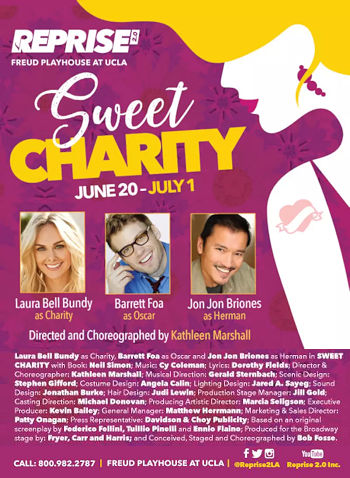
 My slate of Fringe shows might have been over, but I still had one more show on Sunday night. I’ve written before about how I’m on a quest to see musicals I’ve only heard, but never seen. One of these is
My slate of Fringe shows might have been over, but I still had one more show on Sunday night. I’ve written before about how I’m on a quest to see musicals I’ve only heard, but never seen. One of these is  Whew. For me, the
Whew. For me, the 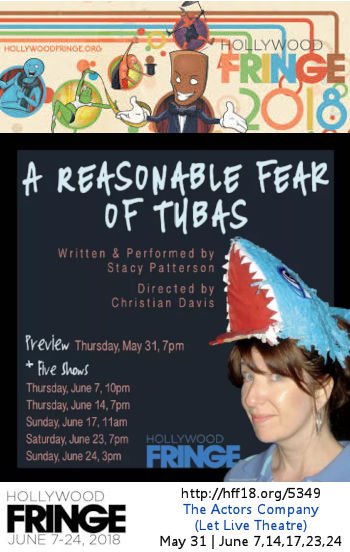
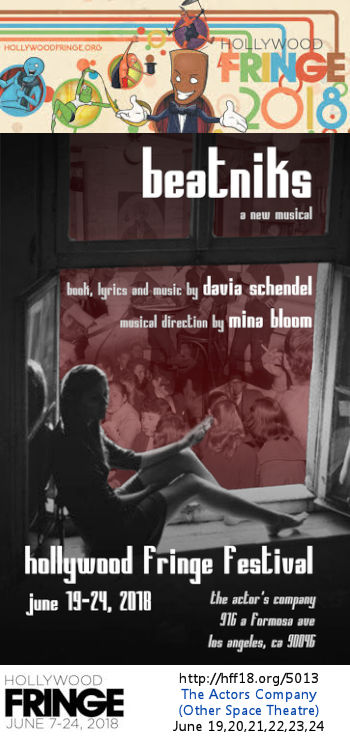

 Monday Morning / Cheese & Things
Monday Morning / Cheese & Things
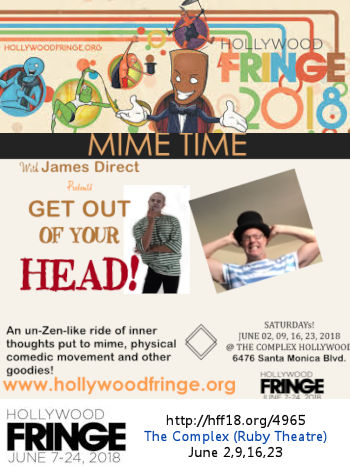

 Before I start filling your feed with the Highway Page updates, or the reviews for the seven shows I’m seeing this weekend, some more clearing of the news chum. This is a collection of articles that caught my eye, but that I’m less than comfortable posting at work during lunch. You’ll see why.
Before I start filling your feed with the Highway Page updates, or the reviews for the seven shows I’m seeing this weekend, some more clearing of the news chum. This is a collection of articles that caught my eye, but that I’m less than comfortable posting at work during lunch. You’ll see why.